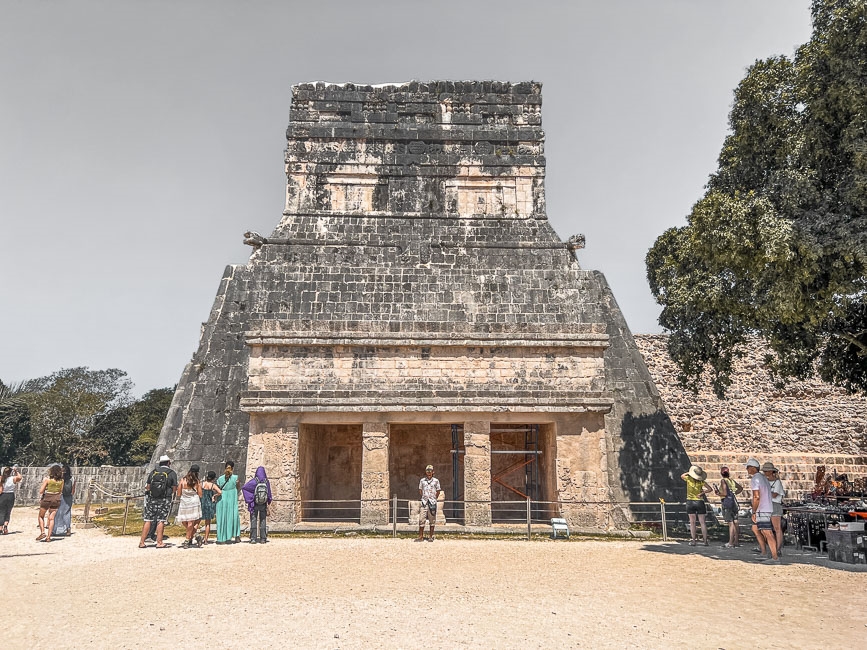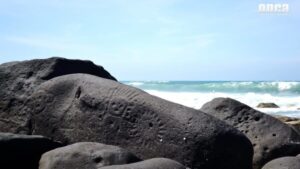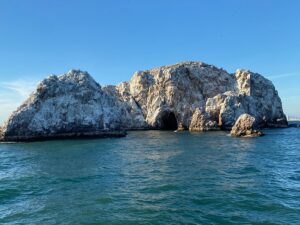Explore the Cenote Sagrado in Chichen Itza
Nestled within the ancient city of Chichen Itza, the Cenote Sagrado, or Sacred Cenote, is a captivating natural wonder that draws visitors from around the world. This large, water-filled sinkhole is not only a stunning geological formation but also a site steeped in history and mystery. Whether you’re a history buff, a nature lover, or simply curious, the Cenote Sagrado offers a unique glimpse into the past and a serene escape from the bustling tourist paths of Chichen Itza.
What to See
The Cenote Sagrado is a breathtaking sight, with its deep, emerald waters surrounded by lush vegetation and towering limestone walls. As you approach, you’ll notice the tranquil beauty of the cenote, which contrasts with the vibrant energy of the nearby ruins. The cenote is about 60 meters in diameter and plunges approximately 22 meters deep, creating a dramatic and awe-inspiring view.
While swimming is not allowed in the Cenote Sagrado due to its historical significance, visitors can walk around the perimeter to take in the scenery and capture stunning photographs. The cenote is often shrouded in mist, adding to its mystical allure. Keep an eye out for the diverse flora and fauna that inhabit the area, including colorful birds and unique plant species.
A Bit of History and Interesting Facts
The Cenote Sagrado holds a significant place in the history of the Maya civilization. It was considered a sacred site, used for religious ceremonies and offerings to the gods. Archaeological excavations have uncovered a wealth of artifacts, including gold, jade, pottery, and even human remains, suggesting that the cenote was a site of pilgrimage and sacrifice.
One of the most intriguing aspects of the Cenote Sagrado is its connection to the rain god Chaac. The Maya believed that cenotes were portals to the underworld and that offerings made here would appease the gods and bring rain to their lands. This belief underscores the cenote’s importance in the spiritual and agricultural life of the Maya.
An interesting fact about the Cenote Sagrado is that it was one of the first sites in the Americas to be explored by archaeologists in the early 20th century. The findings from these explorations have provided invaluable insights into the Maya civilization and its practices.
How to Get There and Tips for First-Time Visitors
The Cenote Sagrado is located within the archaeological site of Chichen Itza, which is easily accessible from major cities in the Yucatan Peninsula. If you’re traveling from Cancun or Playa del Carmen, you can take a bus or rent a car for a scenic drive of about two to three hours. Alternatively, guided tours are available and often include transportation, entrance fees, and a knowledgeable guide to enhance your experience.
Once you arrive at Chichen Itza, the Cenote Sagrado is a short walk from the main entrance. Be sure to wear comfortable shoes, as the paths can be uneven. It’s also a good idea to bring water, sunscreen, and a hat to protect yourself from the sun, as the Yucatan climate can be quite hot and humid.
For first-time visitors, it’s worth noting that Chichen Itza can get crowded, especially during peak tourist seasons. To make the most of your visit, consider arriving early in the morning or later in the afternoon when the site is less busy. This will give you more time to explore the cenote and the surrounding ruins at your own pace.
In summary, the Cenote Sagrado in Chichen Itza is a must-see destination for anyone interested in history, culture, and natural beauty. Its serene atmosphere and rich historical significance make it a unique and memorable experience for all who visit.








